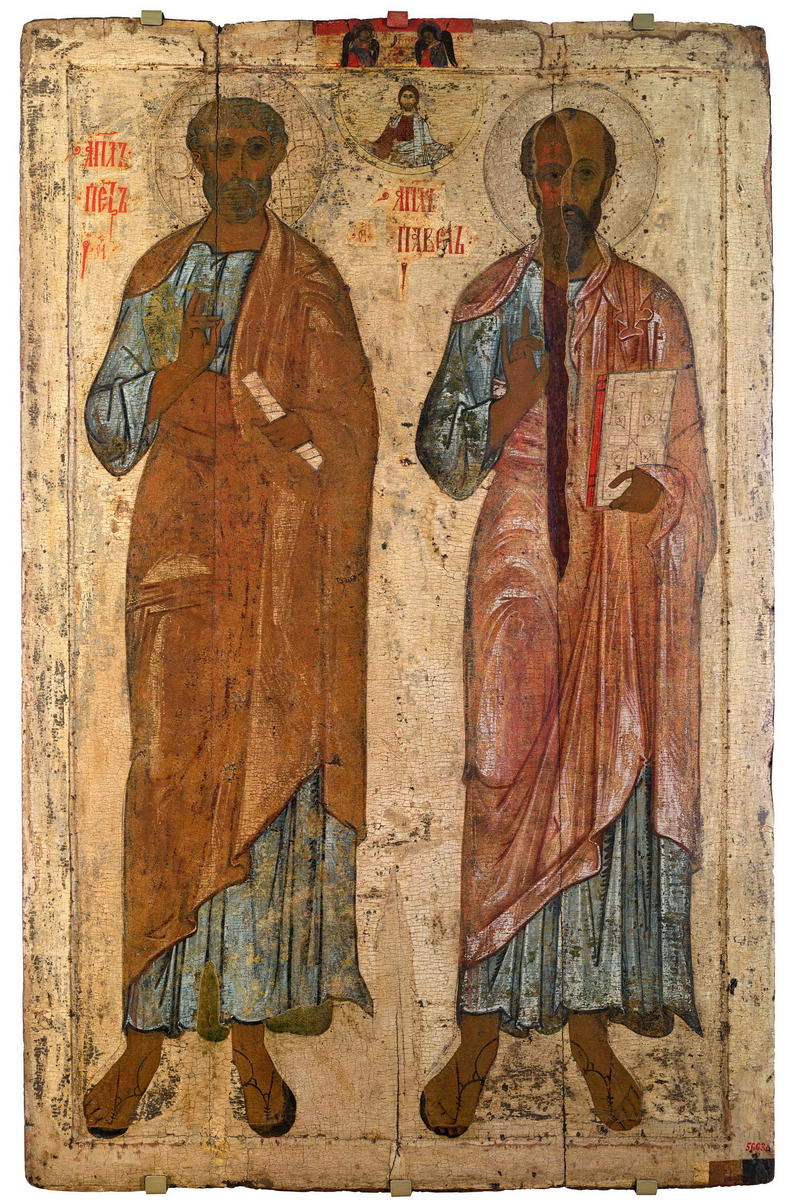


Икона принадлежит к самым ранним из сохранившихся до наших дней образов святых апостолов Петра и Павла. Для нее, как и для других памятников домонгольской эпохи, характерно отсутствие позема (условного обозначения земли в нижней части иконы обычно в виде полосы коричневого или зелёного цвета), монументальность форм, отстраненная значительность образов. Иконографически икона близка прославленному византийскому памятнику XI века — иконе апостолов Петра и Павла из Софийского собора в Новгороде (Новгородский музей-заповедник). Святые изображены фронтально, обращенными с благословением к молящимся. Они одного роста, их жесты и одежды почти повторяют друг друга, подчеркивая их духовное родство. Над ними — Христос, благословляющий и их, и предстоящих перед иконой.

This icon belongs to the earliest surviving representations of the holy apostles Peter and Paul. The absence of the ground (the symbolic sign of the ground is usually designated by a brown or green strip in the lower part of the icon), the monumental forms and the detached importance of the images distinguish this icon as well as the other icons of the pre-mongolian epoch.
The iconography of the icon is close to the renowned Byzantine icon of the 6th century - the Apostles Peter and Paul from St. Sophia Cathedral in Novgorod (Novgorod Museum-Reserve). The saints are depicted frontally, giving their blessing to those who pray. In this icon, Peter and Paul have the same size, their movements and clothes are practically the same, this is all emphasizes their spiritual affinity. Above them is Christ blessing them and the people praying in front of the icon. According to the New Testament (Gospel of Matthew 16:18), St. Peter is depicted with a key, and St. Paul with a book (which symbolizes his writings) containing his multiple epistle (or correspondence).



